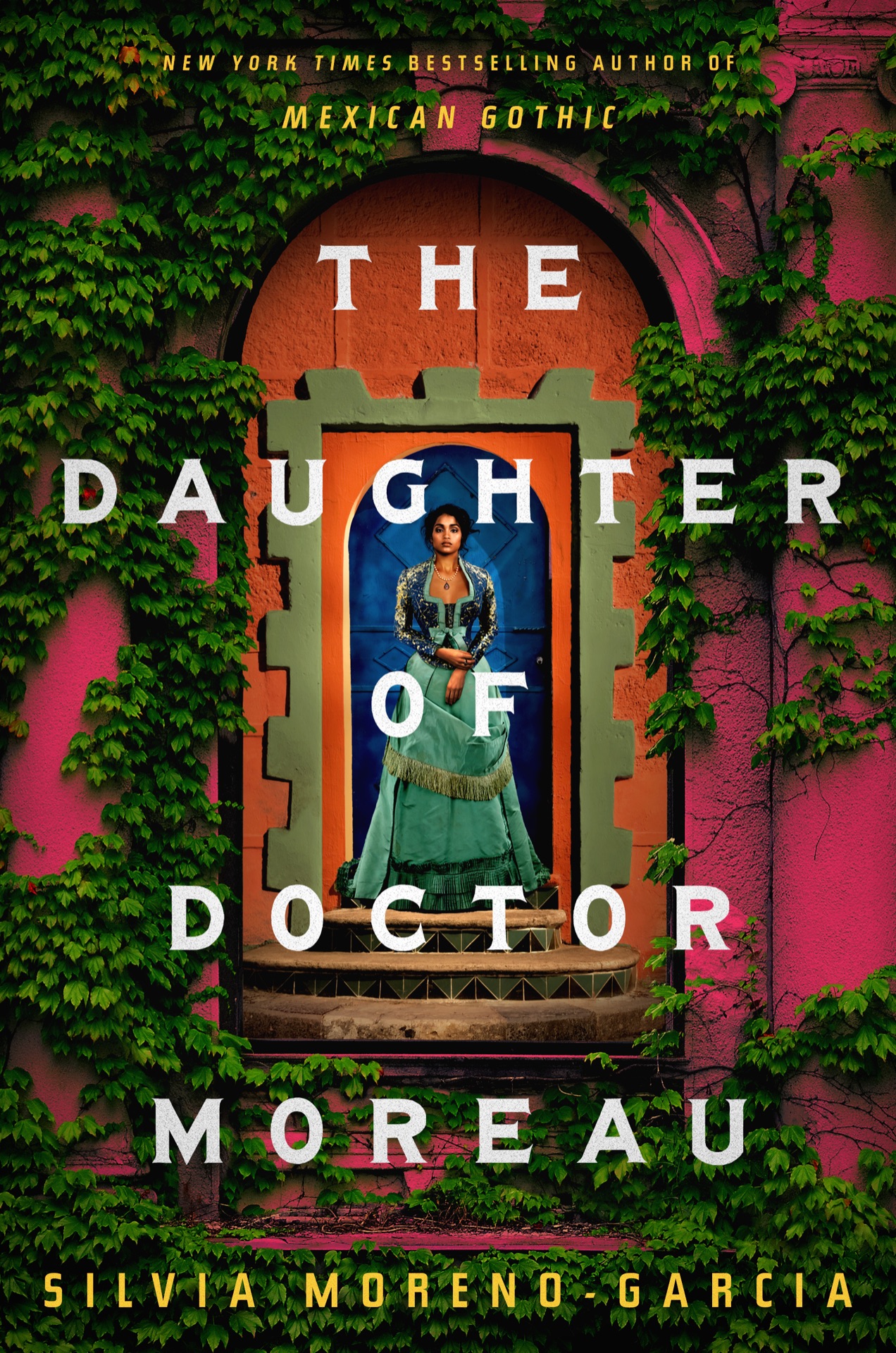 When it comes to Hispanic Heritage Month, you almost always see Mexican Gothic, written by Silvia Moreno-Garcia, on a to-be-read list. Personally, I loved the dark, fantastical story that Moreno-Garcia spun, so I thought for this Hispanic Heritage Month I would read her newest release The Daughter of Doctor Moreau.
When it comes to Hispanic Heritage Month, you almost always see Mexican Gothic, written by Silvia Moreno-Garcia, on a to-be-read list. Personally, I loved the dark, fantastical story that Moreno-Garcia spun, so I thought for this Hispanic Heritage Month I would read her newest release The Daughter of Doctor Moreau.
This reimagining of The Island of Doctor Moreau, by H. G. Wells, focuses in on the doctor’s daughter Carlota and her journey of self-discovery. We are also introduced to Montgomery, who works for the doctor and assists him with his experiments. These experiments are a motley crew of half-human-half-animal creatures appropriately titled hybrids. They all reside in peace within the dense protection of the Mexican jungle on the Yucatan peninsula. However, their lives are upended when they are visited by Eduardo Lizalde, the handsome and charming son of Dr. Moreau’s financer, who leaves their lives in disarray.
As I began reading, I felt myself getting literary whiplash. We are immediately introduced to so many characters, particularly all the hybrids, that it is hard to keep track of everyone By the end of the book, I was still left wondering how many hybrids there were and what each one looked like because they were each made from different animals.
Regardless, the implications surrounding the hybrids had to be the most interesting part of the entire story. Set against the backdrop of 19th century Mexico, Hernando Lizalde initially pays Dr. Moreau to make the hybrids as a form of slave labor. During this time, the natives within the area had begun rebelling, so Lizalde was looking to create a new breed of laborers that would obey him completely.
However, Dr. Moreau’s hybrids are nowhere near working condition with many of them possessing birth defects and mobility issues. This does not deter Moreau from continuing his work because he has no desire to create slaves. In fact, he sees himself as a god who is working to perfect evolution. Therefore, he expects all his creations to blindly obey him and continues to manipulate them throughout the story with physical punishments, religious persuasions, and harmful substances.
Although I found all these plot points to be extremely compelling, they were not the balk of the storyline. In fact, the majority of the story followed Carlota’s romantic endeavors with Eduardo Lizalde and Montgomery’s reactions to this.
I found the character of Montgomery to be the most disappointing piece of the story. For context, he begins working for Carlota’s father at the beginning of the novel when she is 14 years old, and he is 29. The timeline then jumps ahead to when Carlota is 20 and Montgomery is 35. By this time, however, Montgomery establishes an inappropriate fixation on the girl. He is often shown toeing the line between being Carlota’s guardian or her potential love interest. In a matter of pages, he goes from disciplining her to getting jealous over her relationship with Eduardo. I understand that during this time period it may not have been unusual for a large age gap like this to exist in relationships, but when you are writing historical fiction for a modern audience, you need to have their ideals and morals in mind. He watched her grow up, almost like an uncle would, so his love for her is unsettling. Since each chapter switches from Carlota’s point-of-view to Montgomery’s, the reader is forced to entertain these inappropriate dynamics.
All in all, I felt the novel did not get super intense until the third part of the book. This is when we really got to see the doctor’s motives behind the hybrids and how this impacted his relationship with Carlota. However, at this point, the book was nearly over, so the ending and resolution felt a bit rushed.
Overall, I felt this book had so much potential to make important assertions regarding slavery and labor relations during this time in Mexico. Instead, it focused on different romances that Carlota entertained, which could be described odd at best. Regardless, Moreno-Garcia laced this novel with an overwhelming sense of mystery that kept my attention until the very end.

You must be logged in to post a comment.